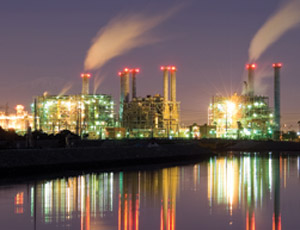The Environmental Protection Agency has set a timetable for regulating greenhouse gases from powerplants and oil refineries that some critics say is unrealistic. But environmental advocates say the development of the New Source Performance Standards for greenhouse gases under the Clean Air Act is long overdue and will supplement some 75 other New Source Performance Standards already in existence for the power sector and other industries.

The timetable is part of a settlement reached among EPA and several states—including California, Rhode Island and Massachusetts—and environmental groups, who had sued the agency during the Bush Administration to develop NSPS for greenhouse gases for the powerplants and oil refineries. According to EPA, powerplants and oil refineries contribute about 40% of the total greenhouse-gas emissions in the U.S.
The settlement stipulates that EPA will issue a proposed rule for greenhouse-gas emissions from powerplants in July 2011, with a final rule expected by the end of May 2012. For refineries, EPA will issue a proposed rule by December 2011, with a final rule by November 2012.
“This action is a result of EPA’s regulation of greenhouse gases, its endangerment finding and its effort to establish a sensible and collaborative approach to integrating greenhouse gases into our regulatory program,” Regina McCarthy, EPA’s assistant administrator for air and radiation, told reporters on Dec. 23. McCarthy says New Source Performance Standards are “one of the most sensible and common-sense approaches” to regulation. In general, the agency does not mandate that any particular technology be used to meet the standards. “We set the standards, and industry figures out the most cost-effective way to achieve those standards,” McCarthy said.
Some industry observers blasted the EPA for moving forward with the regulations.
Scott Segal, an attorney with the Washington, D.C., office of law firm Bracewell and Guiliani, which represents both utilities and refineries, called the timetable “unrealistic.” “Unlike the regulation of other pollutants, addressing carbon does not rely on off-the-shelf technology, so facile claims about past performance are simply inappropriate,” Segal said.
Jay Timmons, executive vice president of the National Association of Manufacturers, says, “It is … questionable whether the EPA has the resources or the capacity to implement these burdensome and complicated regulations.” Timmons said the decision by the EPA to regulate greenhouse-gas emissions “is another example of the agency’s determination to use the Clean Air Act as a way to control greenhouse-gas emissions and overstep the role of our elected officials in Congress.”
But other observers are reserving judgment until they see how stringent the standards will be. To date, the EPA has provided scant detail about the regulations themselves. A spokesman for the Edison Electric Institute says the stringency of the standards “will be the determining factor as to whether they can be met through efficiency improvements, or, if very strict, [they] might result in fuel switching or use of advanced carbon-control technologies, once commercially available.”
Nathan Wilcox, federal global warming program director for Environment America, says the EPA’s announcement “outlined the ‘when’ of EPA’s plans to develop its standards for powerplants, but now we’ll need to ensure that EPA gets the ‘what’ right and sets the strongest possible standards.”


Post a comment to this article
Report Abusive Comment